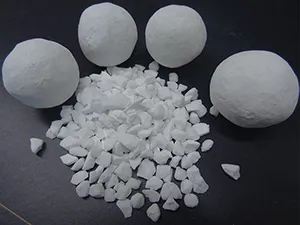Black silicon carbide is produced by smelting quartz sand, petroleum coke (or coal coke), wood chips, and other raw materials in a resistance furnace. It appears as a black opaque body with hexagonal crystals and a Mohs hardness of 9.15. Second only to diamond and boron carbide, it possesses brittle and sharp properties with a certain degree of conductivity.

Tabular alumina is a pure sintered alumina, thoroughly calcined without the addition of any additives such as MgO or B2O3. It boasts a coarse, well-developed α-Al2O3 crystal structure, with an Al2O3 content exceeding 99%.

Ceramic foundry sand is made from high-quality calcined bauxite, processed through electric fusion, granulation, and screening processes to produce spherical refractory particles.

Glass beads, produced from crushed glass and flat glass materials, are processed into spherical shapes through high-temperature melting.

Boron carbide is produced through high-temperature smelting of boracic acid and carbonaceous materials in electric furnaces. It boasts a theoretical density of 2.52g/cm3, a melting point of 2450°C, and a micro hardness of 4950kgf/mm2.